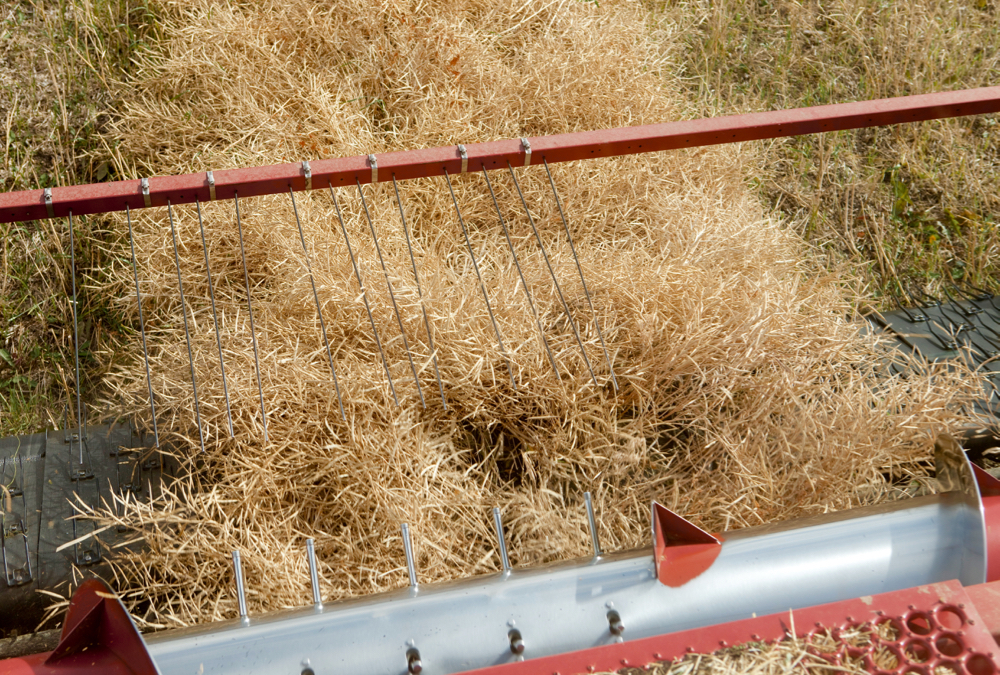The declarations of eligibility western Canadian farmers sign before delivering to elevators, effective Aug. 1, will no longer include crops that don’t require end-use quality assessment as part of the variety registration process.
“It’s not a big change,” Canadian Grain Commission (CGC) spokesman Remi Gosselin said in an interview Thursday.
Wade Sobkowich, executive director of the Western Grain Elevator Association, agrees.
“It won’t be much of a change,” Sobkowich said in a separate interview. “Farmers will be presented with a declaration, as they have been in previous years by the grain company. It’s going to reflect the grain commission’s declaration so that the regulatory component is satisfied, and then the commercial (provisions).
Read Also

Alberta harvest wrapping up: report
Harvest operations advanced to 96 per cent complete in Alberta as of Oct. 7, with only a few late-seeded cereal and canola fields remaining, according to the latest provincial crop report.
“Farmers won’t notice any difference really unless they read the list of grains… on the regulatory part of the declaration.”
Most crops, including wheat and canola remain on the declaration, but corn and soybeans will not.
The following crops will be dropped from the western declarations:
- canary seed;
- chickpeas;
- corn;
- safflower;
- soybeans (food grade);
- soybeans (oilseed); and
- sunflower.
Previously the declaration of eligibility requirement applied to all grains under the Canada Grain Act and only to western grain. Following the change, certain grains will no longer need to be declared under regulation of the Act, the CGC said in a news release Wednesday.
Starting July 1, eastern farmers will also sign declarations before delivering grain to elevators.
“Declarations are a way to assure the dependability and quality of grain at entry into the Canadian licensed grain handling system,” the CGC said in Wednesday’s release. “They support Canada’s commitment to allow U.S.-grown grain to receive an official grade under the Canada-United States-Mexico Agreement (CUSMA).
“By requiring information on variety registration at the time of delivery, declarations help to preserve the integrity of the Canadian grain quality system. The declaration form confirms that the variety delivered, bought, and sold is eligible for the kind of grain and class.”
If an American farmer deliverers to a Canadian elevator an unregistered variety of a crop that requires end-use quality assessment the crop will receive the lowest grade for the intended class, which for milling wheat is ‘feed.’
The same rule applies to a Canadian farmer.
“The declaration supports Canada’s quality assurance system while meeting our commitments” under CUSMA, CGC chief commissioner Doug Chorney said in a statement. “We’ve simplified the declaration requirement to only apply to those grains where registration includes quality factors. This is a more flexible approach that better responds to the needs of the Canadian grain sector.”
Variety declarations started in Western Canada after Alsen wheat lost its interim registration in 2003. The goal was to prevent Alsen from mixing with registered varieties.
The declarations evolved over the years, including after kernel visual distinguishability (KVD) ended in 2008. Under that policy, western Canadian milling wheats had to look like other class members so they could be visually segregated throughout the handling system.
Over the years grain companies also started asking farmers to declare their grain was free of certain pesticides.
“Two years ago the CGC was given the authority to govern producer declarations as it relates to variety,” Sobkowich said. “We needed to be compliant with the regulations, but we didn’t want to overly complicate it and we (grain companies) still had commercial considerations so we figured out a way to put it all onto one declaration so that it was clear and so that it was administratively simple.
“The CGC has made this change with respect to the different commodity types.” he said. “We’ve altered the declaration to reflect that.”
While declarations have focused mainly on milling wheat, end-use quality is a prerequisite to registration for many western crops, including canola.
The following crops remain on the new declaration:
- barley;
- beans;
- buckwheat;
- canola;
- fababeans;
- flaxseed;
- lentils;
- mustard seed;
- oats;
- peas;
- rapeseed;
- rye;
- triticale; and
- wheat (including durum).
Declarations help grain companies deliver the crops buyers want, Sobkowich said. If a farmer misrepresents a crop, that could downgrade an elevator bin or even a shipload of product, potentially costing the grain company millions of dollars.
Declarations help ensure the high quality of Canadian crops even though they are being moved through a bulk handling system, which is more efficient and less costly than an identity preserved system.
“This is what the customer demands,” Sobkowich said. “It’s a tool to help manage varieties and MRLs (maximum residue limits for traces of pesticides) to meet their demands.”
— Allan Dawson is a reporter for the Manitoba Co-operator at Miami, Man.
















